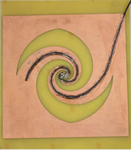nodoubt
Newbie level 4

Hi dear friends,
I am trying to simulate my equiangular spiral antenna in HFSS for my thesis a long time ago, but unfortunately it doesn't work well...
I tested two configurations for the antenna: one with right hand polarisation (RHP) and another with Left hand polarisation (LHP). The results are attached for both polarisations of the antenna.
I also used a lumped port for testing each antenna.
My results are really bad... I don't understand why!
I attached my results and the hfss files.
I would appreciate if you could take a look at my files. Thank you very much for your help.
Here are my files:
View attachment RHP.zip
View attachment LHP.zip
View attachment Spirals_HFSS.zip
Kind regards
I am trying to simulate my equiangular spiral antenna in HFSS for my thesis a long time ago, but unfortunately it doesn't work well...
I tested two configurations for the antenna: one with right hand polarisation (RHP) and another with Left hand polarisation (LHP). The results are attached for both polarisations of the antenna.
I also used a lumped port for testing each antenna.
My results are really bad... I don't understand why!
I attached my results and the hfss files.
I would appreciate if you could take a look at my files. Thank you very much for your help.
Here are my files:
View attachment RHP.zip
View attachment LHP.zip
View attachment Spirals_HFSS.zip
Kind regards
Last edited:



